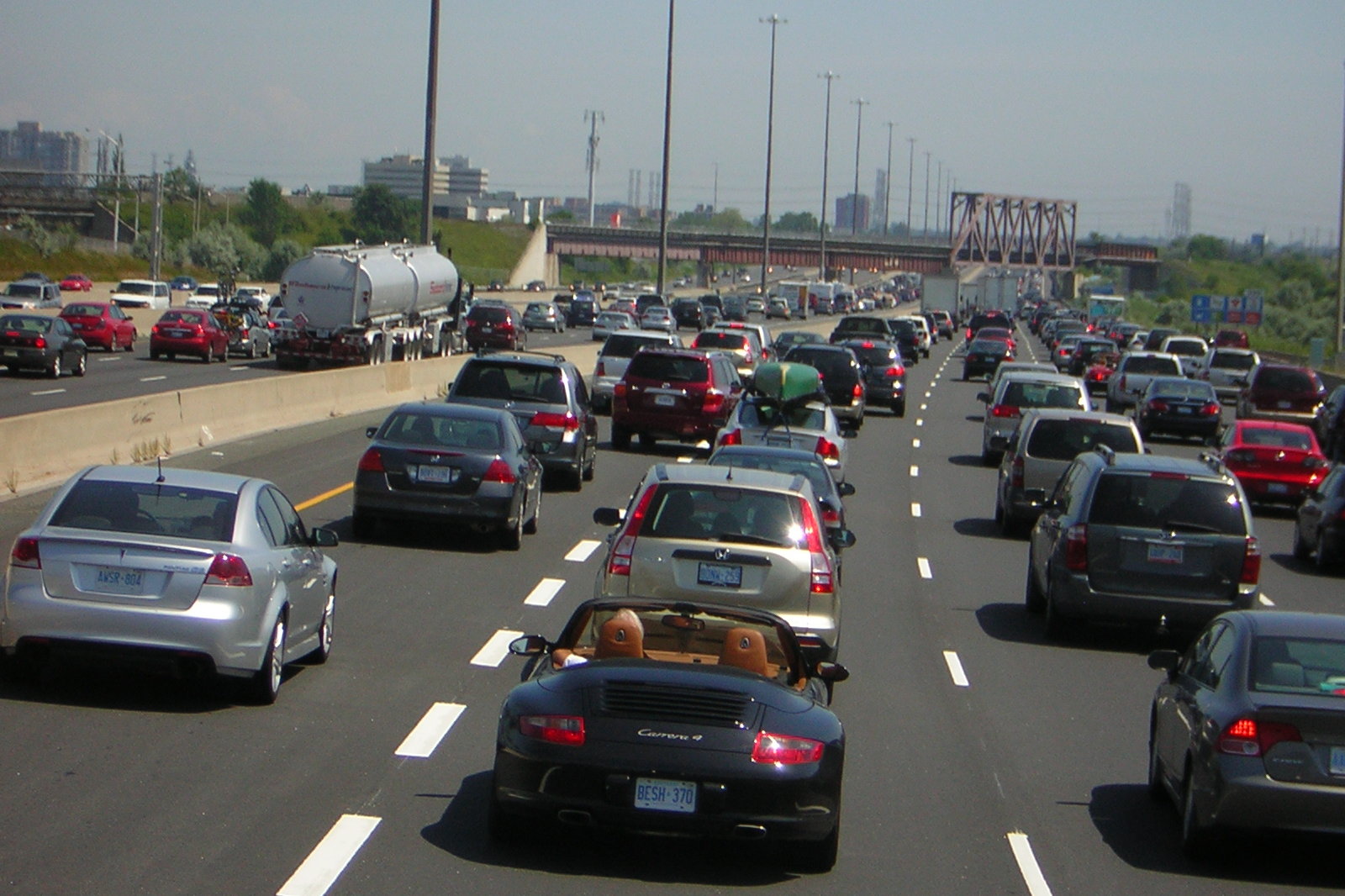Highways and sprawl are a costly combination. In the Greater Toronto and Hamilton Area (GTHA), our economy loses $11 billion a year due to traffic congestion. Sprawl increases land consumption by up to 80 per cent and car use by up to 60 per cent. Reports and experts alike tell us that traffic congestion is out of control and public transit investment is sorely needed. Yet Ontario is still building highways – such as Highway 413 – in the GTHA, despite plenty of evidence indicating highways don’t solve congestion, just generate more traffic.
At the recent Sprawl Brawl (Round 2) – Transit vs. Highways – experts Ed Levy, Pamela Blais, Cherise Burda and Carol Layton gave their diagnosis about how Ontario can combat gridlock in the GTHA. They all underlined the importance of integrating rules about where and how we build our cities with decisions about where to build transportation networks in order to cut the gridlock that is throttling our highways and our economy.
For example, by changing zoning by-laws, we can encourage mixed-use development, which includes midrise buildings (4 to 8 storeys) near public transit hubs, reducing the need for residents, employees and business owners to drive. We can also build more compact housing near growing employment areas like Markham and Meadowvale. Unfortunately, land-use and transportation decisions are often mired in local politics that don’t look at the broader picture of what’s best for the entire GTHA or address public interests like air and water quality, the cost of sprawl on taxpayers or impacts on our climate. That is why the province needs to set clearer rules around how our communities should grow.
Transportation is responsible for 35% of greenhouse gas emissions in Ontario. It is one of the key sectors where citizens and industry can make a difference by leaving the car behind or choosing alternative methods of transporting goods. Ontario is moving in the right direction by putting a price on carbon, investing in Electric Vehicle charging stations and supporting public transit. Yet some elected officials are playing politics with these crucial infrastructure investments, blocking investments in places where public transit is needed to reduce traffic congestion or supporting costly highways in areas where they are not needed. A few local examples of this counterproductive approach:
- York Region Council voted to build more low density housing on farmland (greenfield sites) instead of directing more growth to existing serviced urban areas. This decision is contrary to the direction needed to support public transit for climate friendly communities
- Brampton Council rejected Main Street light rail transit planned for the downtown area designated as an urban growth centre in the Peel Region Official Growth Plan even though the province was going to fully pay for it.
- Some municipal councils are advocating for the construction of the GTA West highway (413) when expanding GO train stops and speeding up service should be the priority.
The Sprawl Brawl experts agreed that building public transit in the GTHA’s most congested areas should be the focus of future public transit investments. Research produced by Neptis Foundation and Dr. Pamela Blais identifies where congestion occurs in the GTHA and how people are getting to and from work and school. This research can help remove the myopic local politics out of planning for our cities and public transit networks. Dr. Blais of Metropole Consulting highlighted a five point plan to reduce gridlock in the GTHA:
- Change land-use patterns to reduce the need to travel long distances to work and shop (In the GTHA, 4 million people live in car dependent suburbs).
- Build more public transit.
- Build public transit in the places where it will have the most impact.
- Fix the disconnect between where growth/employment is actually occurring and where it is planned to grow.
- Use road use pricing to reduce car use.
For example, the employment zone around Pearson airport is the second largest in Canada with 298,000 workers. Ninety-three per cent of them drive to work as there is very limited public transit service but plenty of highways. The airport is serviced by the 409, 427 and the 401 highways and yet there is still congestion. Continuing 1950s style growth patterns of building highways that facilitate sprawl is how we got ourselves into this mess in the first place. Yet, Ontario is still considering building the 413, a new ring road around the GTHA. Instead, we should invest the over $4 billion that it will cost to build the highway into public transit where it’s needed to both reduce congestion and combat climate change.
It’s time to plan an integrated transportation network throughout the GTHA that reduces congestion and gets our economy moving. Ontario now has the opportunity to decide where we want our cities to grow under a revised Growth Plan and decide how to link these areas with the revised Big Move Transportation Plan.
Strong provincial leadership is needed to create greater housing and business densities in communities and get public transit put in the right places. This will benefit Ontarians’ quality of life (fewer hours stuck in the car on jammed highways), Ontarians’ wallets (less sprawl will mean less of a burden on taxpayers to subsidize the costs of sprawl) and our shared climate (compact communities produce three times less carbon emissions than sprawl). Ontario, it’s your turn to step up and provide the leadership the region needs.
And you can help give the province a nudge by signing our action at choosesmartgrowth.ca to encourage smarter transit ready- climate friendly communities.
Don’t miss Sprawl Brawl Round 3: Smart Growth vs. Sprawl on March 29, 2016, featuring Dianne Saxe, Ontario’s Environmental Commissioner







